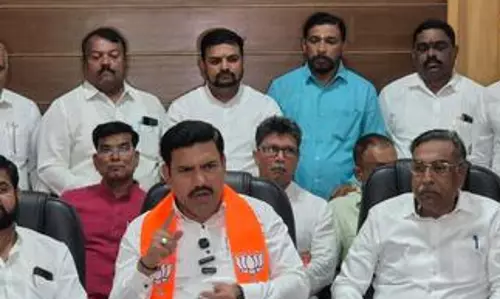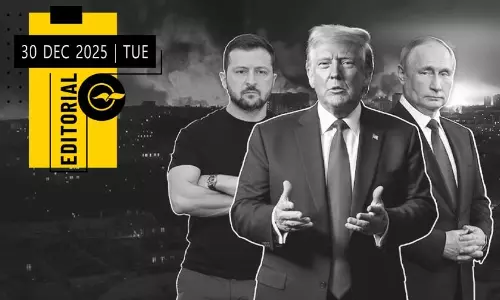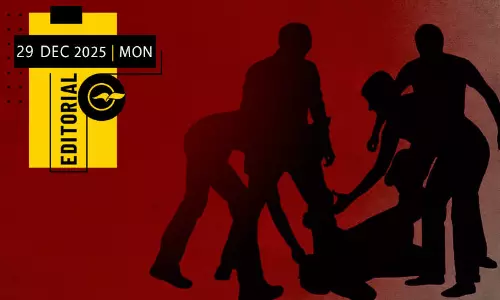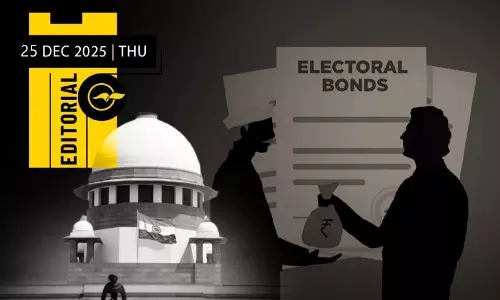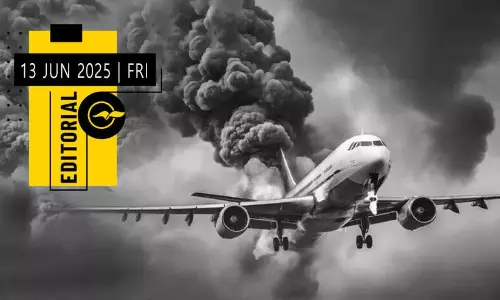
Dream budget or ‘dreams’ in the budget
text_fieldsBudget in the present times is a tug of war between the dreams of prosperity and dearth of resources.
This is much evident in the first comprehensive budget of the Pinarayi Vijayan government in Kerala. On one side is the helplessness generated by constraints and on the other, is the profusion of desires. Either the hopes for welfare could be compromised because of the limitations or weave boundless dreams shrugging off the sense of reality. Finance Minister Thomas Isaac has been trying to bring these expectations to the levels of practicality as much as possible. It would be fortunate if even half of the expectations in the budget are accomplished. If it doesn’t happen, there are justifications for defense as well. It’s primarily the blow to the country’s economy left by the note-ban crisis. Demonetisation has also affected the state much leading to the collapse of annual schemes and programs. A dip in the tax revenues was also witnessed. The Minister, amid the crisis, is trying to bring a hike in the annual schemes and moot several welfare programs. The collection of resources for this purpose is however, carried out without tax increase.
The Minister has placed his hopes mainly on two sources for accumulating excess resources. One is the new Goods and Services Tax (GST) system which will be commenced in July. The Minister through this, hopes for an increase in revenue for the state; Kerala being a consumer state is expected to particularly benefit from the GST. The second way of bringing in wealth is the Kerala Infrastructure Investment Fund Board (KIIFB). Given the existing adverse circumstances, it’s a beneficial system. However, the amount of revenue coming in through this manner is not in the hands of the government. Therefore, the anticipated money has already been earmarked for different schemes. The different schemes would be implemented depending upon the availability of money. The rest is neglected. In short, the relation between the budget and reality depends on the future. If the anticipated revenue comes in, then the different measures to spend the funds emphasized in the budget however, isn’t bad. A reasonable amount of money is allotted for the service and basic-facility sectors as well as relief and welfare sectors.
The budget aims to revive the education sector by creating 2, 500 new teachers’ posts, allocating a reasonable amount for the universities and making 45, 000 smart classrooms. New medical posts including doctors and nurses will be created and special health insurance will be provided for the differently abled, the aged, BPL families and other vulnerable sections. Welfare schemes for the expatriates and compensation funds for the victims of rape and Endosulfan were also announced. Houses will be built to rehabilitate the homeless and funds were announced for the aid of food crops and rice farming. Free medicines for the treatment of lifestyle diseases were also announced. Basic internet services will be provided to 20 lakh poor families through the K-phone project. Funds would also be allowed to improvise the public distribution system and as subsidy in order to curb the inflation.
The Minister claims to create one lakh employment opportunities by 2020 in Infopark. At the same time, no efforts are made to change the outlook of seeing liquor sale as the main means of revenue. There will be no surprise if attempts are made to increase the sale of liquor. While funds are released for the welfare and relief sectors on one side, it’s clear from the budget that the Left Front fails to realize the ideological irony in creating victims on the other side. When basic sector development and different welfare schemes are aimed anticipating the revenue that’s likely or unlikely to come, issues of priority would naturally surface. Shouldn’t the order of priority of carrying out the activities, based on the availability of funds, be decided as part of the budget recommendations? The priority list should be a subject of budgetary discourses. Thomas Isaac has charted out a route map and trudging it successfully would surely be beneficial. How far it would be possible is unpredictable.









